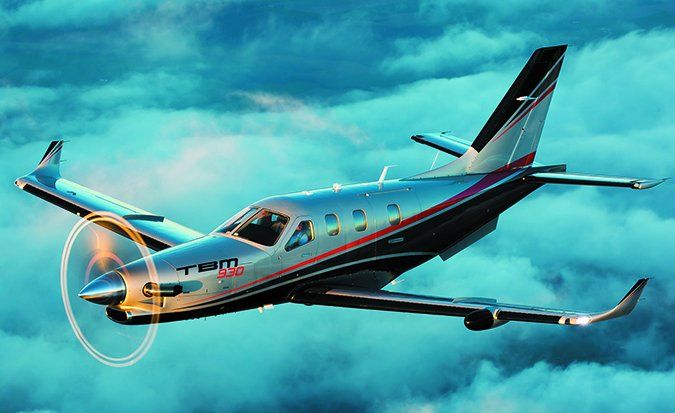However skilled (or not) general aviation pilots are, they have proven consistently good at one thing: losing control of airplanes and digging smoking craters in the verdant earth. The reasons aren’t necessarily understood but the solution is becoming increasingly laser focused on providing autopilots that won’t let you crash, but will nudge and prod and do everything short of seizing control of the aircraft. Except now, they’re even doing that.
The latest comes from Daher in the company’s new TBM 930 cabin-class speed merchant. The TBM 930 is essentially the same airplane as the 900, but it has Garmin’s new G3000 EFIS/GFC 700 autopilot suite in place of the G1000 previously offered.
So-called envelope protection—the capability of the autopilot to sense and correct an upset or impending excursion outside the airplane’s performance envelope—has been a work in progress since it first appeared in 2008 in the Cirrus Perspective system, a branded G1000 variant for Cirrus. The latest envelope protection systems don’t require the pilot to push a LVL button, but instead passively monitor the flight from wheels up to wheels down, intervening aggressively if the pilot is about to screw up.
So pervasive is this technology becoming that some light sport aircraft have it, too, trickled down by Garmin into the G3X Touch. And where it trickled down from, conceptually at least, was the G1000 and GFC 700 autopilot. The G3000 in the 930 raises autopilot nannyism to a new level of sophistication and even higher than that used in the Piper M600 we covered in the September 2016 issue.
Airborne Films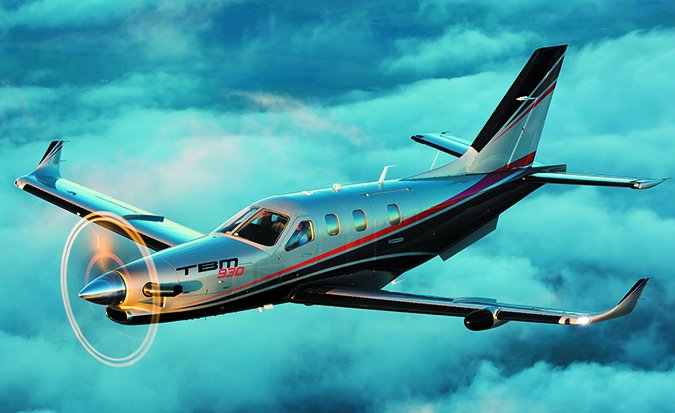
Daher’s Thinking
High-performance single-engine turboprops seem to sort into three market segments: working airplanes, personal transport and for-hire people transportation. Cessna’s Caravan locks down the cargo and working airplane side while the Pilatus PC-12 is a popular corporate and charter/cargo hauler. The TBM—the fastest of the herd by far—is a favorite among owners who fly themselves to distant destinations, usually without benefit of a professional pilot. We’ve noticed that the airplane has a bit of a cult following and a community of owners who know each other. Piper’s Meridian and now M600 compete in the owner-flown segment, but Daher believes the TBM exists in its own strata.
Daher has stoked owner loyalty through a succession of models beginning with the TBM 700 in 1991, the 850 in 2006, the 900 in 2014 and now the 930. The 850 got a 150-HP boost over the 700 with the Pratt & Whitney PT6A-66D and when the 900 followed, it retained that engine. But with aerodynamic cleanups, Daher (then marketing as Socata) squeezed more speed out of the airframe. With engine changes and redesigns, the TBM line has become ever faster and higher flying. The 700 series cruised at 280 knots and the 850 upped that to 315 knots. When the 850 was reworked into the 900, the cruise speed bumped up a bit more to as much as 330 knots.
The TBM is fast enough that Daher views its competition as light owner-flown jets such as the Cessna Mustang and not other turboprops. The TBM enjoys the advantage of being able to operate into and out of shorter, less improved fields than typical light jets need and Daher says this seals a lot of sales for the company.
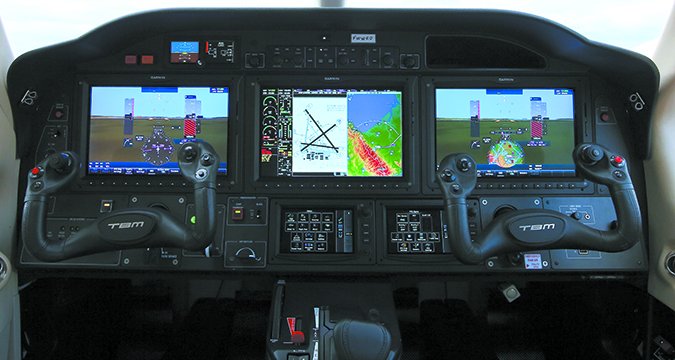
But with this performance comes a penalty and it’s not just money. Because of its speed and power, the TBM has proven to be a handful for pilots who are not necessarily stepping down from jets or twins, but up from high-performance piston singles. They thus find themselves flying in the high flight levels at speeds 100 knots or greater than what they may be accustomed to. As a result, as described in the sidebar, the TBM has had its share of accidents, many of which are attributed to loss of control biased toward the low-speed end of the envelope.
Heretofore, this has been addressed with specific training, both from the factory and under insurance company mandates. It’s not uncommon for underwriters to require new owners to fly with a TBM-qualified copilot for a certain number of hours. But as other manufacturers have discovered, especially Cirrus, training goes only so far in reducing loss-of-control accidents.
New Avionics
Airframe wise, the TBM 930 variant is identical to the 900 save for the new Garmin G3000 EFIS suite and an upgraded interior. The G3000 was first announced—wait for it—almost eight years ago. But it is only now beginning to gain traction in the turboprop and jet market, with installations in the Embraer Phenom 100, the emerging Denali turboprop from Cessna, the Piper M600 and Eclipse E550. We covered the G3000 in the September 2016 issue of Aviation Consumer as part of our Piper M600 coverage.
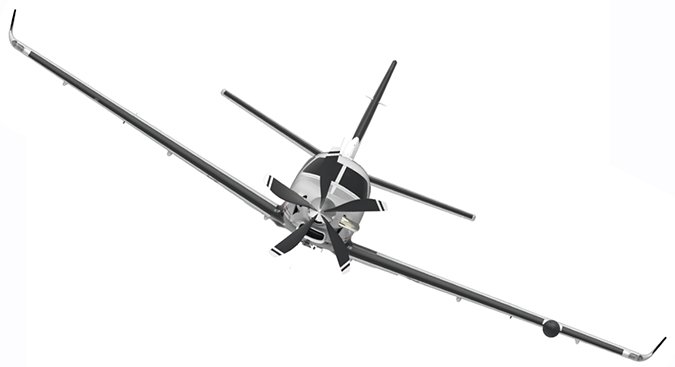
Daher’s execution of the G3000 differs by degree from Piper’s, especially in how the envelope protection is applied, according to Daher’s Nic Chabbert. Daher views the G3000’s envelope protection—which is formally called Electronic Stability and Protection—as having three parts: the basic ESP itself and two active subroutines, one to guard against under speed (USP) and a second emergency descent capability (EDM) to bail a pilot out of a hypoxic, non-responsive event. While these are separate capabilities, they have some overlap so it makes as much sense to think of ESP as an umbrella system. Further, it has some visual alerting on the displays that tie directly into what ESP is doing.
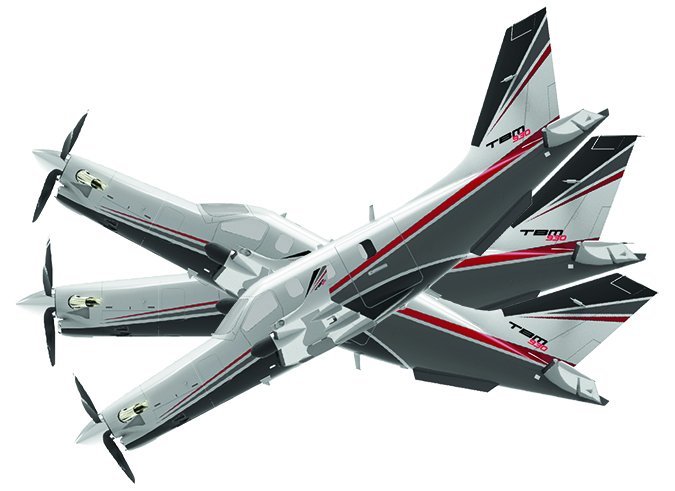
Chabbert demonstrated the system for me on a flight from Daher’s new U.S. facility in Pompano Beach, Florida. Unless the ESP has been purposefully deactivated, its default setting is always on. In normal flight, it may be most noticeable through roll alerting. While being hand flown, if the airplane is held in a 60-degree or greater bank, the autopilot servos will exert ever more counter-control force as the bank is increased. Ten seconds into the struggle, the ESP will turn on the autopilot and right the airplane.
From the pilot’s seat, the push back ramps up smoothly and presents as increasingly stiff control forces that are difficult to defeat. Once back inside the bank parameters, the servos return to neutral.
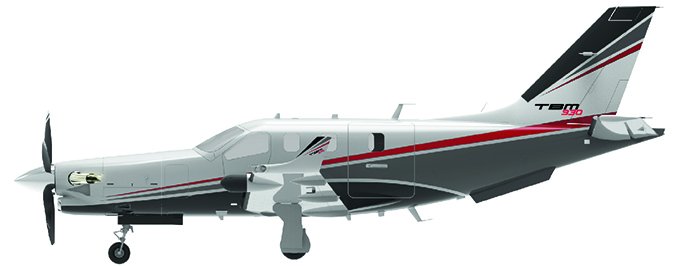
The ESP’s pitch parameters are similarly configured. If the pilot manually forces 22 degrees or greater pitch up or 17 degrees down, the servos will come alive and push back, activating the autopilot if the pilot doesn’t get the message.
The system also has an always-active feature called USP or under speed protection. USP is configuration sensitive and works around the stall speeds for various aircraft configurations. It represents a layered approach to stall protection and under speed warning. As the airplane slows, the pilot first hears an aural warning: AIRSPEED, AIRSPEED. If the speed continues to decay, an aural stall warning (STALL, STALL) is heard followed by a vigorous stick shaker. Although it felt like a stick pusher to me, Chabbert says it’s a shaker only. You’d have to be asleep or drugged to miss it. The G3000 also has two visual aids for low-speed control and recovery. One is a constantly visible angle-of-attack indicator in an analog format, with a red line for the stall AoA. It’s located right under the G3000’s airspeed tape. This indicator is one of the best I’ve seen and is easier to interpret than tape- or chevron-type indications.
It also has what Daher calls a pitch limit indicator. It looks like a small bent fence or pitchfork that floats in the attitude indicator area of the PFD. It’s there to notify the pilot that he’s flirting with edge-of-the-envelope pitch and needs to correct immediately. If the pilot persists in an attempt to stall the airplane, the USP will activate the autopilot and assume control of the aircraft. It will then fly the airplane at 75 knots if it’s in the landing configuration or 95 knots if it’s clean. Since the 930 doesn’t have autothrottles, the system has no ability to add power and will hold the target speed until ground impact. Presumably, the pilot would get back into the loop and resume control.
Other Protections
At the opposite end of the speed spectrum, the TBM system keeps the airplane from exceeding Vmo (266 knots indicated), again with aural warnings and by autopilot intervention if the pilot isn’t shaping up. This relates to another protection built into the TBM 930’s system: hypoxia alerting and intervention. Daher is sensitive to this because of a high-profile accident in which a TBM 900 was lost in what is believed to be a hypoxia-induced incapacitation, possibly due to loss of cabin pressure. (See the sidebar for details.)
At its ceiling of FL310, the TBM can maintain a sub-10,000 foot cabin. If the system senses the cabin is above that, it issues a chimed and visual CABIN ALT alert. It will also issue an aural USE OXYGEN MASK message.
If the pilot doesn’t respond, the emergency descent module kicks in three seconds later and executes a 90-degree left turn and begins a maximum-rate descent to 15,000 feet and breathable air.
The point of the turn, Chabbert said, is to alert air traffic control to a potential problem, but also to clear the airplane from a potentially congested airway. Of course, depending on the airspace, that turn could also confront a controller with IFR separation challenges, but ATC would be unlikely to miss the deviation.
Chabbert said the autopilot will descend at the 266-knot indicated Vmo, but no faster. Depending on the power setting, this will yield descent rates of 6000 to 9000 feet a minute, putting the airplane back into a breathable atmosphere in under four minutes. Once at that altitude, the airplane will level off while the pilot—one hopes—comes to his senses.
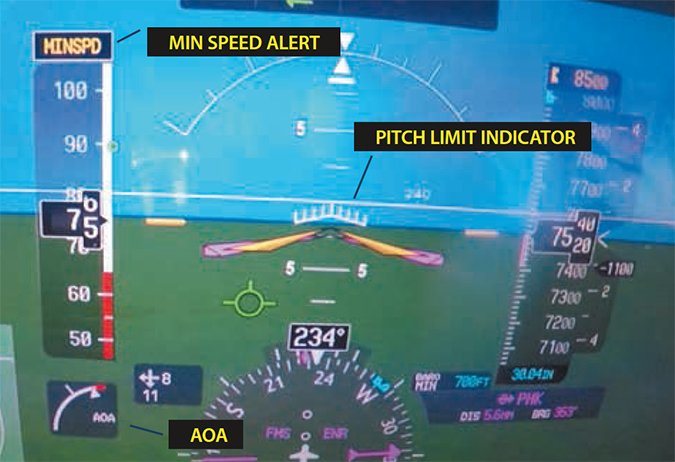
Busy Display
I noticed when reviewing the video footage shot for this article that at times, the PFD display on the G3000 is busy, urgent and noisy. During routine flight, it’s no different than any other PFD, although the displays are larger than those found in most GA aircraft. When the ESP is active, there are chimes, aural warnings, plus symbology the pilot will need to understand and deal with. Training facilities have already added this to their 930 programs. On the other hand, if it all proves overwhelming, not to worry; the airplane will intervene and save itself or at least give the pilot time to regroup and get back ahead of the situation. This is important in an airplane that can easily climb at 2000 FPM and cruise at more than five miles a minute.
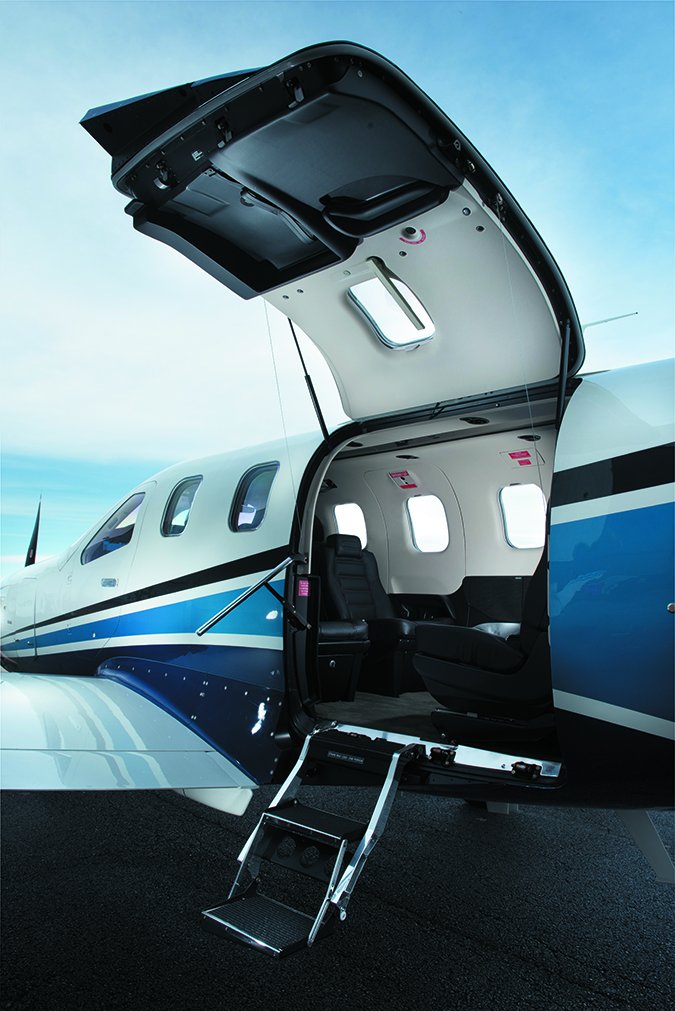
Anyone with stick time behind Garmin GTN series navigators should adapt readily to the G3000. The two touchscreen pads at the top of the pedestal come readily to hand and the basic design is similar to the GTN displays. However, they have deeper functionality tailored to the TBM 930’s features and engine oversight.
But not all buyers are impressed with them. Daher’s Michel Adam de Villiers said that about a quarter of TBM buyers have stuck with the G1000. The G1000—including the new NXi version soon to be available—can be fitted with the same envelope protection features offered with the G3000. “Some pilots are just more comfortable with the G1000 and they like to stick with it,” de Villiers said.
In order to be effective as a safety system, Daher will need good penetration of ESP into the TBM fleet and traditionally, this has taken time as new airplanes are added to the population. As of late fall, Daher had 54 ESP-equipped airplanes in the fleet and with 850 and 900 models capable of receiving the G1000 upgrade, the company was expecting to have as many as 100 equipped aircraft in the field within a year. There are a little more than 800 TBMs flying worldwide and de Villiers says more than half of those aircraft can be upgraded at a cost of about $47,000. Considering the value of the airplanes, that’s not an expensive upgrade.
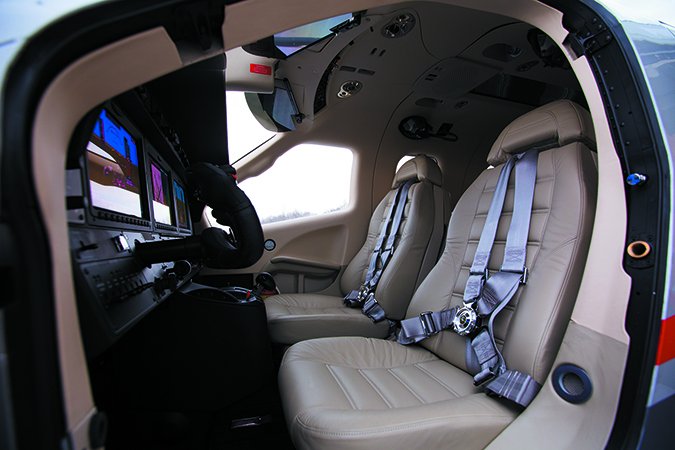
Although the TBM has had its share of loss-of-control fatal accidents, the Glazer accident in 2014 clearly shook the company, given that Glazer was an experienced TBM pilot and head of the owner group at the time. He was flying the first 900 delivered.
“Loss of control is a problem across the board in general aviation,” says Chabbert, “and the TBM is no stranger to them, unfortunately. This system is definitely going to save lives.”
In my view, if that doesn’t prove to be true, it won’t be for lack of trying on Daher’s part.
Loss of Control Often Means Stall Spin
Our review of TBM accidents revealed that about 35 percent of them have proven fatal and of those, 10 appear to be what we consider classic loss-of-control accidents.
We found a total of 37 TBM accidents in the NTSB records, with 13 of them being fatal. However, these may be incomplete because not all accidents outside the U.S. are necessarily tracked by the agency.
We don’t have reliable hours-flown data so it’s not possible to compare accident rates among the turboprops or even against high-performance piston aircraft such as the Cirrus line.
To get a rough hack on accident incidence, we looked at accidents measured against total registered aircraft. With just more than 800 aircraft on the registry worldwide, we found 13 fatal accidents for a rate per 1000 registrations of 16.25. By comparison, the Pilatus PC-12 has 1400 airframes flying with 16 fatals that we could find. That calculates to 11.4/1000 registrations.
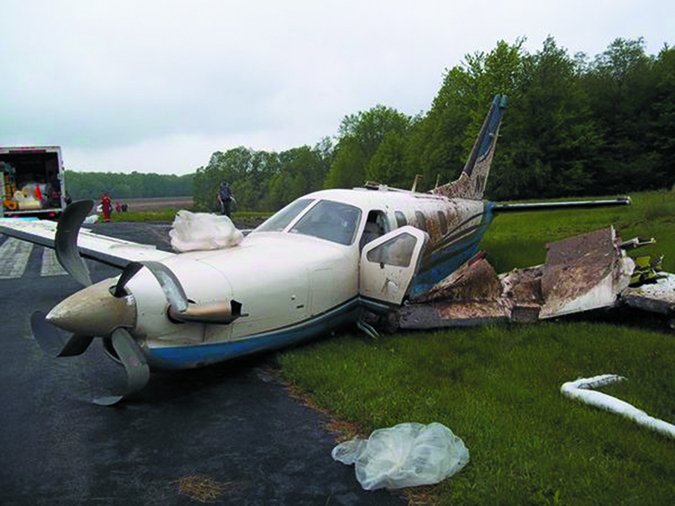
The Piper PA-46 Meridian line has about 470 airframes and 15 fatal accidents worldwide. Thirteen of those were in the U.S., although we couldn’t find details on all of them in the NTSB records. That yields a rate of 32/1000 registrations, the highest of the three. A disclaimer: Because we don’t have good hours exposure data, we’re not claiming that this comparison is anything other than a rough comparable look at the data.
In this comparison, the TBM finishes in the middle of the pack and we suspect that it, and the Meridian’s apparent higher rate, are due at least in part to being flown by owner-pilots rather than professional pilots. Additionally, the PC-12 is often used in Part 135 operations, where a higher standard of care exerts downward pressure on accident trends.
Looking over the TBM accident data, we were surprised to find that despite the model’s blistering speed, its loss-of-control pattern is strongly biased toward the slow end of the envelope: stalls and spins. There were no high-speed breakups or upsets of the sort you might expect from an airplane flying high and fast.
But one of the most spectacular accidents might have been due to high altitude. On September 5, 2014, owner Larry Glazer, then president of the TBM Owners Association, took off from Rochester, New York, for Naples, Florida. Enroute, he became unresponsive to ATC, eventually being intercepted by a pair of Air Force fighters. The aircraft continued southbound, finally crashing off Jamaica. The NTSB has not issued a final report yet, but hypoxia due to loss of cabin pressure is suspected.
That accident appears to be a one-off, but the more common fatal scenario is a stall on approach or in the pattern. We found seven of these in various phases of flight, including one on a go-around. Could these have been prevented by Daher’s new ESP system?
Nothing is certain, but we’re hard pressed to see why ESP stall protection wouldn’t have saved these aircraft, by either warning the pilots or assuming direct control of the airplane until the pilot could recover to normal flight. And that is, after all, the point of this technology.
See a video review of the TBM 930 on Aviation Consumer‘s YouTube channel.

